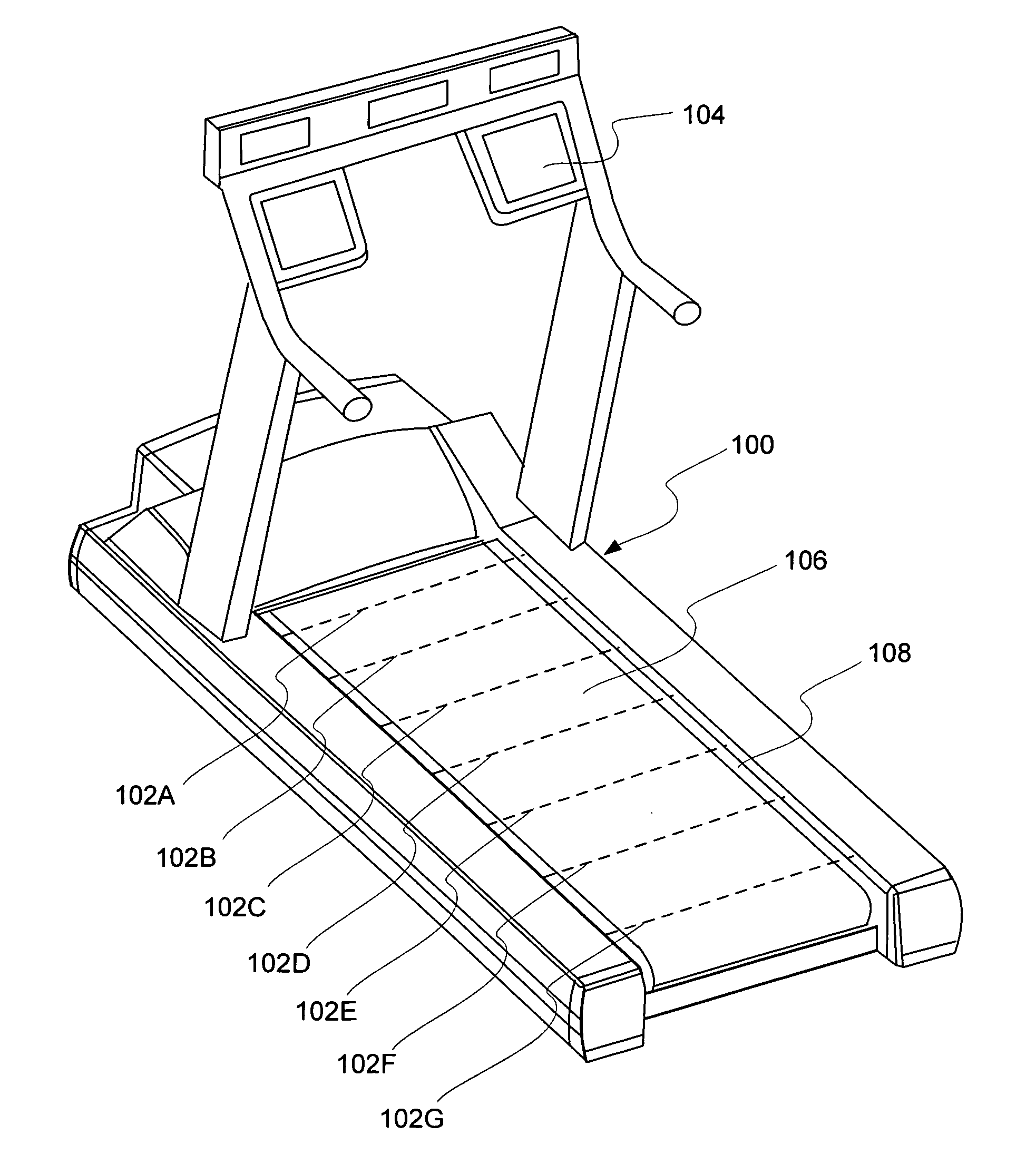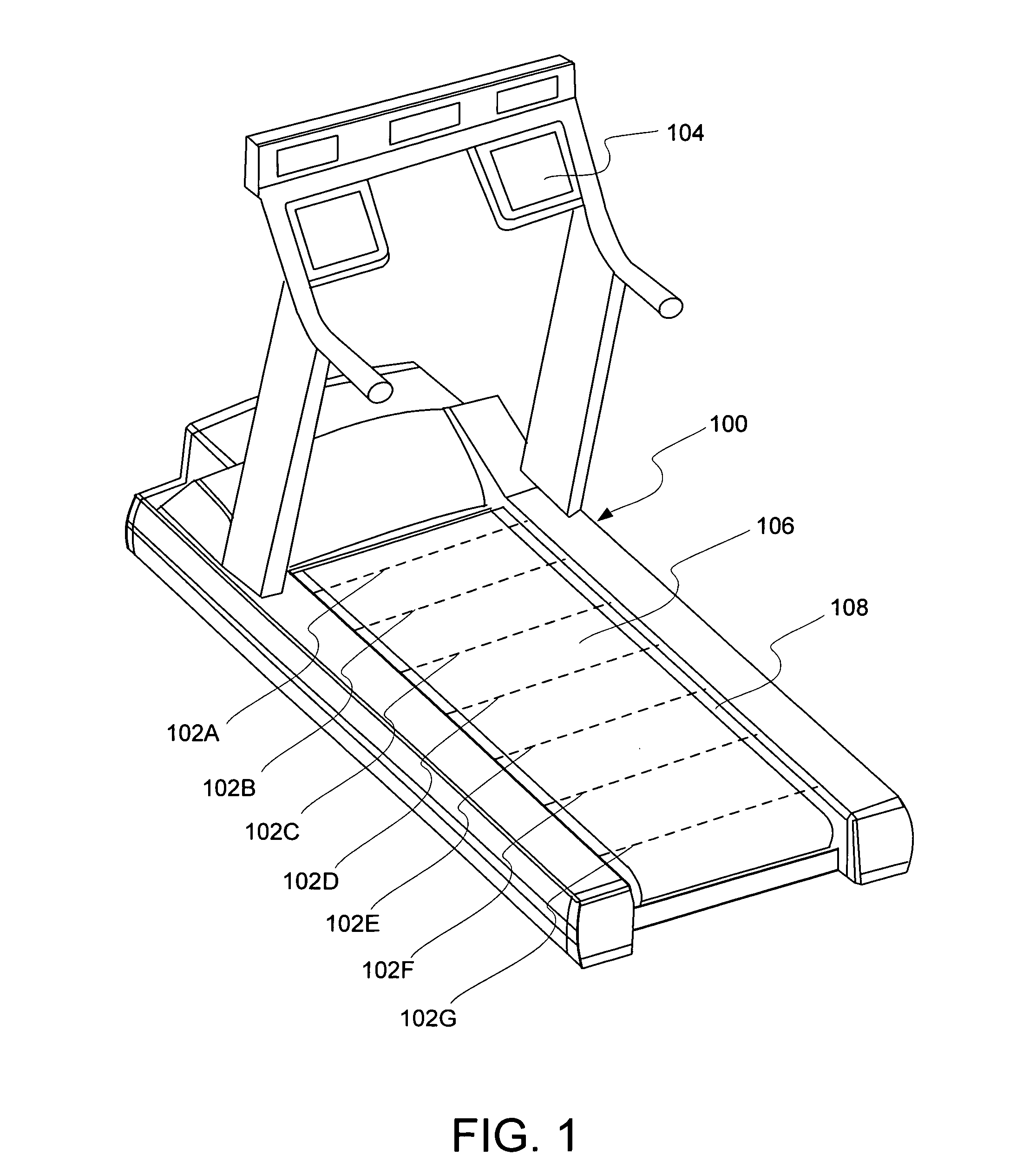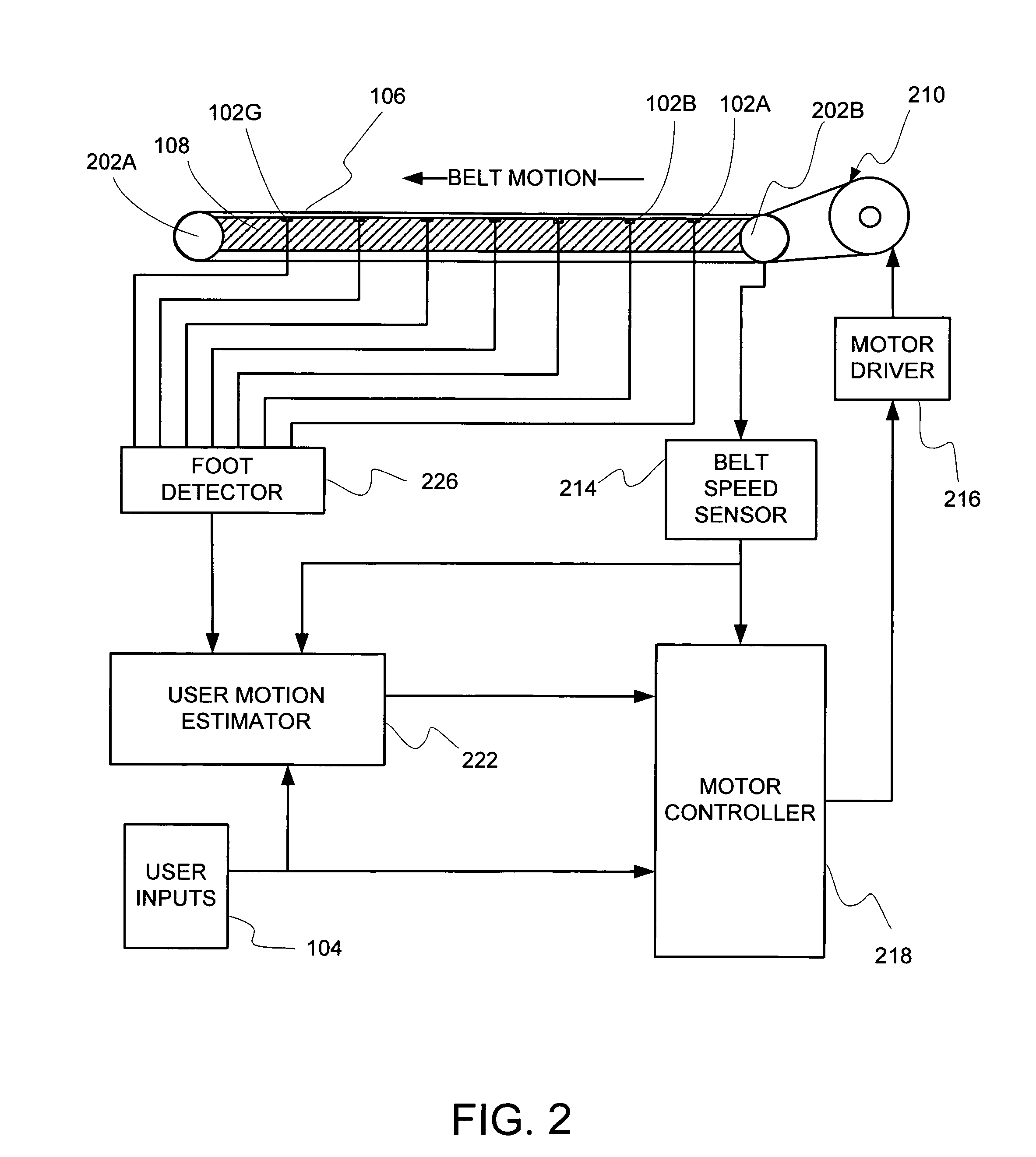User footfall sensing control system for treadmill exercise machines
a control system and treadmill technology, applied in sport apparatus, gymnastics, clubs, etc., can solve the problems of large majority of treadmill exercise machines not including, use of treadmill exercise machines, and prior art commercial failur
- Summary
- Abstract
- Description
- Claims
- Application Information
AI Technical Summary
Benefits of technology
Problems solved by technology
Method used
Image
Examples
first embodiment
FIG. 11
[0045]FIG. 1 shows the basic appearance of an exercise treadmill device 100 according to a first embodiment. Treadmill 100 includes a user input device 104. Treadmill 100 also includes a series of foot sensor elements 102A to 102G, spanning the width of a tread base 108. A tread belt 106 lays on top of tread base 108 and forms a continuous loop extending beneath tread base 108. A user of treadmill 100 would walk or run on top of tread belt 106 in the direction facing toward input device 104 as the top surface of tread belt 106 moves rearward.
System Block Diagram—FIG. 2
[0046]FIG. 2 is a system block diagram representing the treadmill control system of one embodiment. Unless otherwise indicated, components of the system block diagram may be implemented as hardware devices, software routines, or employing any other type of compute mechanism that successfully implements the defined operations. The information values, which may also be called signals, states, or variables, which p...
PUM
 Login to View More
Login to View More Abstract
Description
Claims
Application Information
 Login to View More
Login to View More - R&D
- Intellectual Property
- Life Sciences
- Materials
- Tech Scout
- Unparalleled Data Quality
- Higher Quality Content
- 60% Fewer Hallucinations
Browse by: Latest US Patents, China's latest patents, Technical Efficacy Thesaurus, Application Domain, Technology Topic, Popular Technical Reports.
© 2025 PatSnap. All rights reserved.Legal|Privacy policy|Modern Slavery Act Transparency Statement|Sitemap|About US| Contact US: help@patsnap.com



